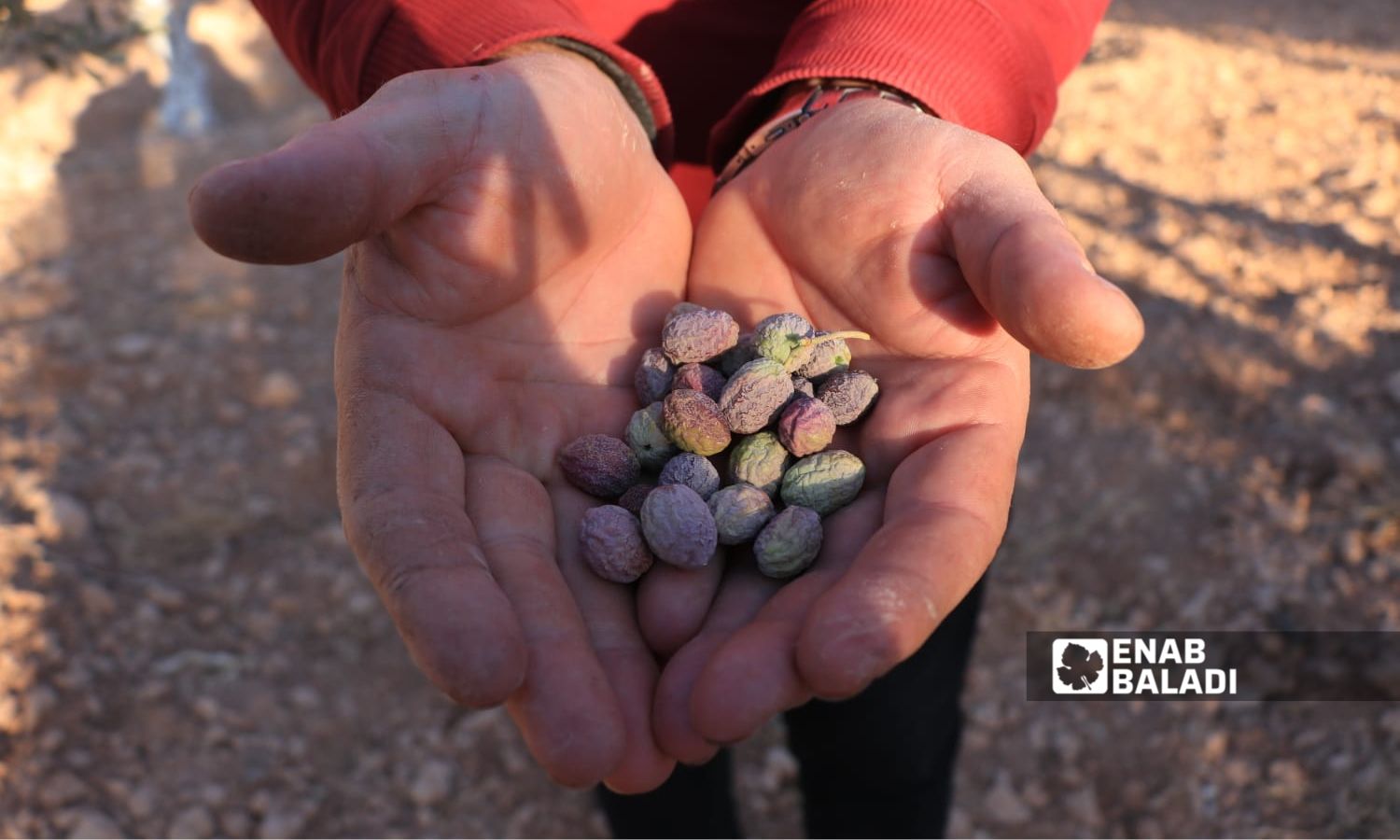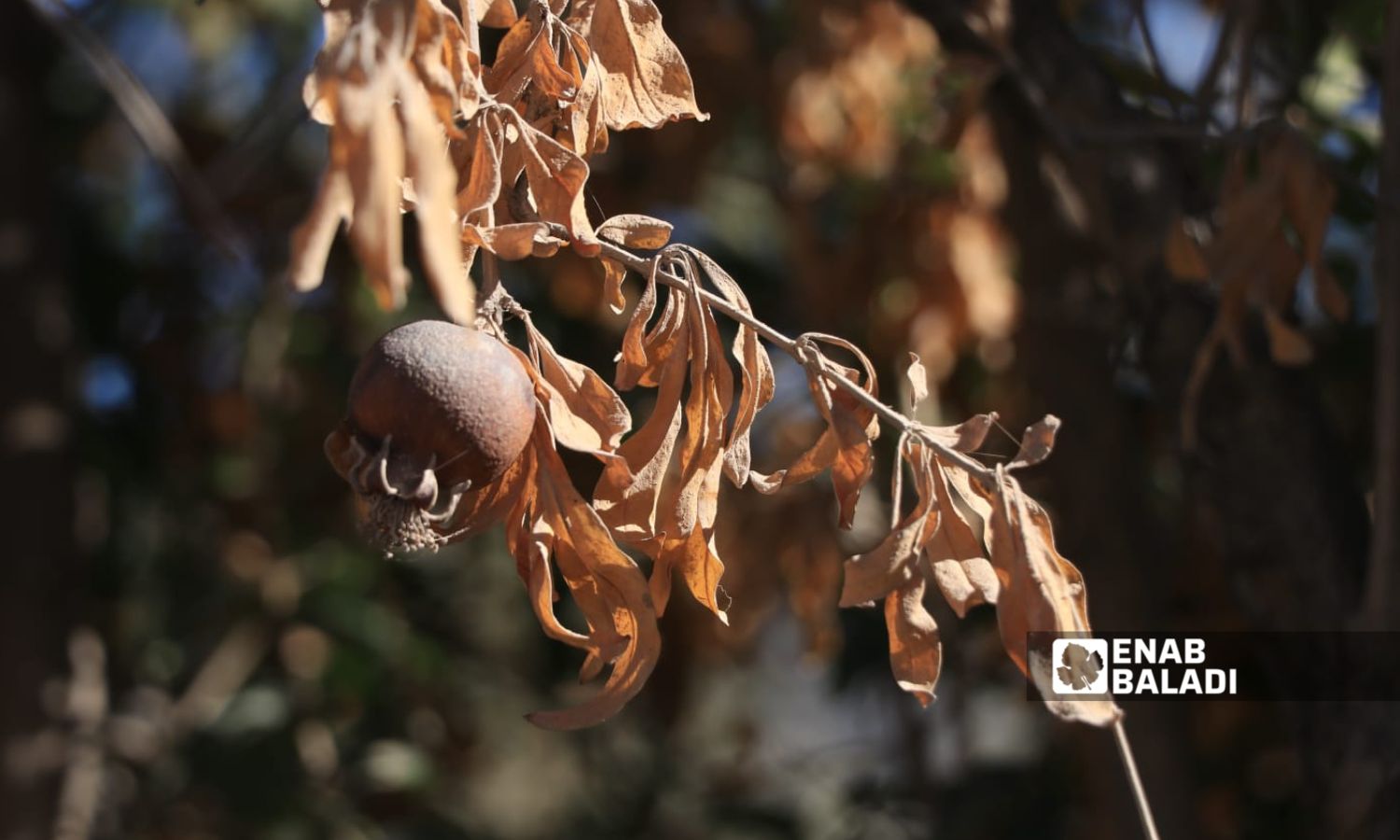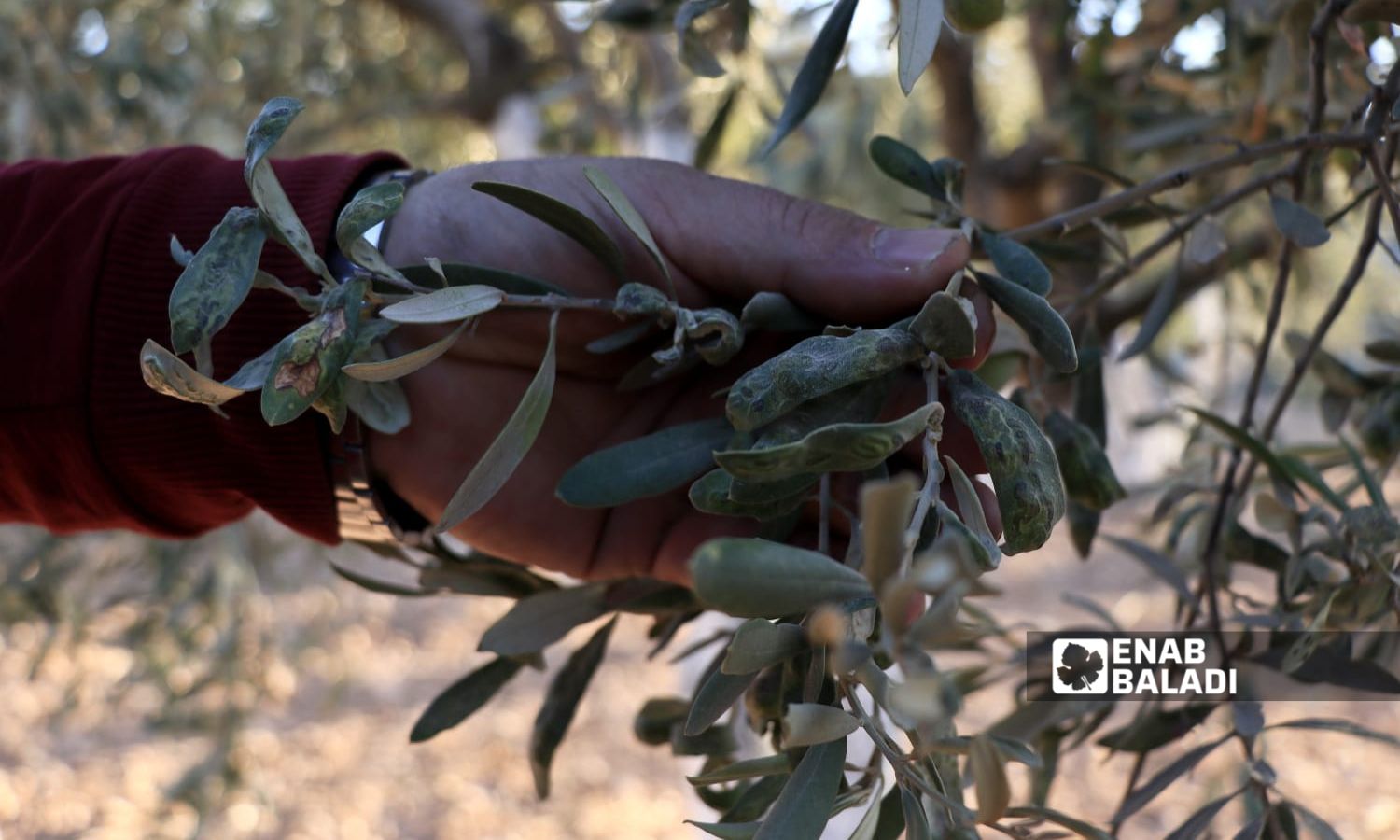



Enab Baladi – Walid al-Idlibi
Farmers in the al-Bab area of northwest Syria and the surrounding towns are suffering from drought and a scarcity of rainfall this season.
This has negatively affected their agricultural crops, especially olives, for which the harvest time is approaching.
According to the local council of the city, 80% of farmers in al-Bab and its countryside rely on rainfed agriculture (which depends on rainwater).
The Department of Awqaf and Religious Affairs in al-Bab called for a “Rain Prayer” (a prayer performed by Muslims to seek rain) on Friday, October 25, indicating the delay in rainfall and the resulting damage to the farmers.
As’ad al-Kazzakaz, a farmer residing in the al-Bab area, is waiting for rainfall, having been advised by the owner of the oil press he regularly deals with.
Ahmed al-Ahmad, the chief of the Na’man town affiliated with al-Bab and a member of the Farmers’ Association, told Enab Baladi that a single rainfall would be sufficient for the farmers to be able to harvest the olive fruits.
However, the farmer needs two to three years to recover from losses due to drought, according to the Na’man chief.

Drought has negatively impacted the olive crop in al-Bab, northwest Syria – October 23, 2024 (Enab Baladi/Walid al-Idlibi)
The Na’man chief explained to Enab Baladi that other crops, such as grapes and winter vegetables, have also been affected due to the drought and lack of rainfall.
Al-Ahmad stated that the quality of grape crops has declined, with the grapes becoming small and dried, even though the vineyards are irrigated and not rainfed.
Summer and autumn crops such as wheat, cucumbers, cumin, and barley have also borne no fruit.
Pomegranate trees and many crops belonging to As’ad al-Kazzakaz and other farmers have also suffered damage.

Pomegranates and other crops have also been impacted by drought in al-Bab, northwest Syria – October 23, 2024 (Enab Baladi/Walid al-Idlibi)
The Na’man chief and the farmers who spoke with Enab Baladi pointed out the presence of insects and unprecedented diseases affecting the crops this season.
Agricultural engineer Omar al-Hamidi explained to Enab Baladi that the delay in rainfall leads to the proliferation of new forms of pests, insects, and viruses.
According to al-Hamidi, scientific studies confirm that climate change plays a fundamental role in the spread of pests and plant diseases such as earworm, fruit flies, and desert locusts.
The absence of rainfall, drought, and high temperatures for prolonged periods affects the growth process of microorganisms beneficial in decomposing organic matter.
Al-Hamidi added that plants and microorganisms need a moderate humidity level suitable for proper growth.
On the other hand, autumn rains benefit evergreen trees, as they help wash the olive trees and improve the quality of the oil.
Early rains help wash away the salts that accumulate in the soil throughout the summer, facilitating soil breakdown and plowing, according to the agricultural engineer.

New plant diseases are emerging on crops in al-Bab, northwest Syria – October 23, 2024 (Enab Baladi/Walid al-Idlibi)
Agricultural engineer Walid Kanas, who is also a farmer in the al-Bab area, attributes the drought to global warming and the lack of green spaces in the region.
Kanas added that the last four seasons have also experienced drought and noticeable delays in rainfall.
Rains are supposed to fall at least once or twice in September as is customary every year, which has not occurred in recent years, according to Kanas.
The only solution for farmers is to irrigate rainfed crops using groundwater, according to the farmers spoken to by Enab Baladi.
This was corroborated by agricultural engineer al-Hamidi, who stated that delayed rainfall will force farmers to increase traditional irrigation (watering), which will increase costs for the farmers.
However, the Na’man chief indicated that groundwater wells are also witnessing drought and barely suffice.
Al-Ahmad added that farmers who took proactive measures from the beginning and conducted accurate calculations comparing the available water to the essential needs of the crops managed to weather this crisis.

80% of farmers in al-Bab, northwest Syria rely on rainfed agriculture – October 23, 2024 (Enab Baladi/Walid al-Idlibi)
The Na’man chief complained about the ineffectiveness of the agricultural pesticides available in the region, amid a lack of guidance and awareness from the relevant authorities in the area.
There are no educational plans from the local council in al-Bab and its countryside for farmers in the area regarding the drought crisis, as confirmed by the director of agriculture and animal wealth in the council, agricultural engineer Muhammad Ali.
Ali considered that the farmer’s experience has allowed him to adapt to some extent to the lack of rainfall.
He called on the concerned authorities and organizations to collaborate with the council to reactivate irrigation projects, support farmers in the area with irrigation networks, and treat wastewater to use it for irrigation.
Prior to the outbreak of the Syrian revolution in 2011 and the region’s loss of control over the Syrian regime, al-Bab used to source water from the Euphrates River, according to agricultural engineer and farmer Kanas.
The official in the local council encouraged farmers to shift to crops that require less water in light of the ongoing water crisis in the region.
He also urged farmers to increase planting trees, especially in poor and rocky lands, to help combat drought.
The number of trees in al-Bab and its countryside is estimated to be around 1.65 million, according to the local council’s estimates.
Olives comprise 80% of the trees, followed by pistachios, pomegranates, grapes, almonds, and other species.
The area planted in al-Bab is estimated at about 12,500 hectares, and the number of farmers in the region is about 4,500.

There are about 1.65 million trees in al-Bab, northwest Syria, and olives make up 80% of them – October 23, 2024 (Enab Baladi/Walid al-Idlibi)
if you think the article contain wrong information or you have additional details Send Correction